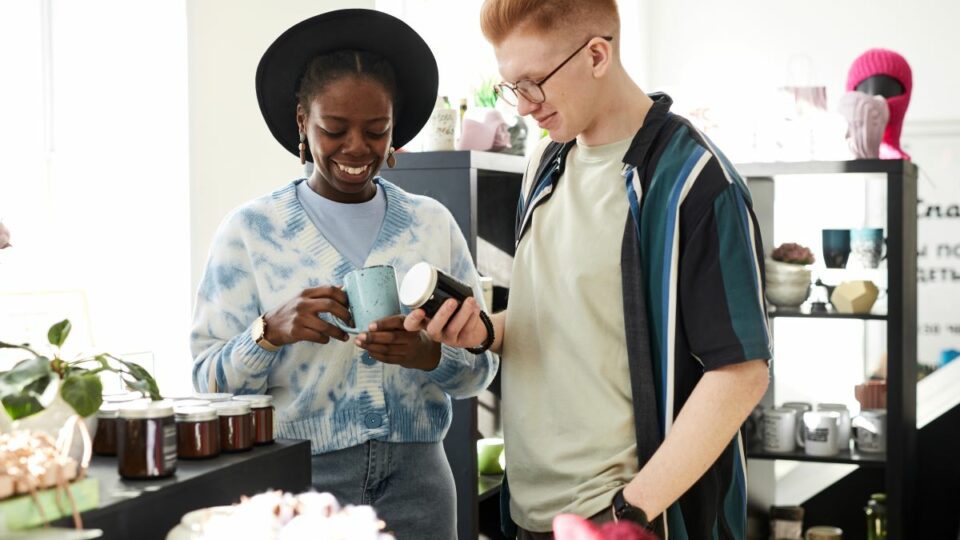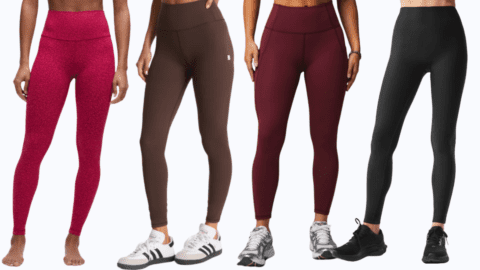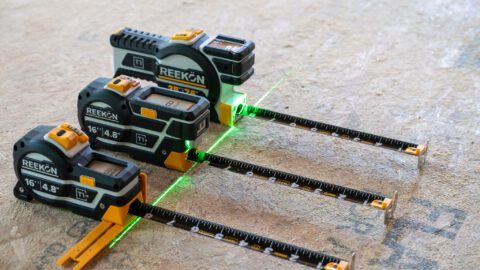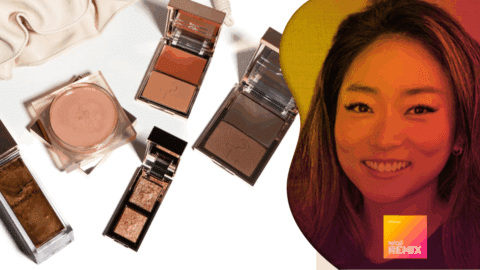Even though “digitally native” is on the short list for describing Gen Z, its members are most certainly in-store shoppers as well, albeit with their own set of priorities and expectations. New research from MG2 confirms that Gen Z is looking for curated visual merchandising experiences and for brand values to shine through in these physical environments, along with a focus on wellbeing and community connections.
The firm conducted a series of qualitative and quantitative studies to better understand how the Gen Z consumer feels about different browsing and buying experiences. The process encompassed an internal discussion with Gen Z team members at MG2, an open forum with members of the Z Suite, a committee of Gen Z founders and thought leaders, and a quantitative survey of 1,100 Gen Z consumers. The goal, according to Melissa Gonzalez, Principal at MG2 and Founder of the Lion’esque Group, was to get the more detailed context that one could not get with quantitative data alone.
There were several overarching takeaways that offer a solid baseline for how Gen Z participates in brick-and-mortar retail:
- Nearly 75% find trying on products and having the ability to touch and feel a product to be the primary motivation for shopping in-store;
- Outside of traditional retail environments, about 50% of respondents prefer to engage with brands through curated shop-in-shop experiences featured in larger department or retail stores; and
- Of all in-store technology options available, one out of two respondents chose to engage with augmented reality displays to test colors, styles and fit more than any other interactive tech.
But by asking more follow-up questions and digging into the psychology of Gen Z, MG2 was able to challenge, and completely debunk, common generational myths and misconceptions.
“Historically, there has been just one blanket statement about Gen Z and there are a lot of generalizations around their behaviors,” Gonzalez said in an interview with Retail TouchPoints. “We wanted to make sure that we took a deeper dive, understanding that this is a complex group. Some of it is due to the spectrum they are in the age range — you have that older Gen Z that’s more the millennial, and then you have the younger Gen Z who’s right above the Alpha generation, and then there’s nuances in between.”
Inside Gen Z Archetypes
During the research process, MG2 identified four consumer archetypes that study participants were asked to opt into, including:
- The Happily Detached — consumers who are tech-savvy but don’t want to live and breathe on social media, according to Gonzalez. She added that when it comes to technology use, “they have pretty high expectations, so we need to understand how to delivery upon that.”
- The Resilient Achiever, who wants to feel traditional success and be at the forefront of innovation, according to Gonzalez. “What does that mean to them, and how are they aligning with brands that are enabling them to be there?”
- The New Perfect, who is radically transparent and “radically accepting of different shapes and shades of beauty,” Gonzalez said.
- The Ethical Advocate, who wants transparency and authenticity and aligns themselves with brands that make a difference.
Although the archetypes helped MG2 better gauge high-level behaviors and expectations, Gonzalez noted that many consumers were actually hybrids of multiple archetypes. “That’s why qualitative research is so important, because there are going to be different situations where they’re going to over-index in one persona versus the other,” she said.
“At the end of the day, we are a design architecture firm, so we wanted to walk away with insights to say, how do we really create great experiences?” Gonzalez explained. “If you blanket it, you really are falling short of that. I think a lot of the time, it’s easy to take overarching narratives and then just apply it broadly.”
5 Key Takeaways About the Physical Store Experience
Key takeaways uncovered during the research process include:
1. Gen Z wants a brand’s values to shine through in physical environments: Nearly one-third of consumers said they prefer messaging in-store that reflects brand values, with sustainability being most important. This is especially critical to Ethical Advocates and New Perfect consumer archetypes, coming in 10% greater than for Happily Detached or Resilient Achievers.
“This is still a young generation that’s just coming into their career, still largely living with their parents, so they’re still going be motivated by cost, even if they want to make sustainable decisions,” Gonzalez said. “But the ones that do prioritize it want brands to go further so they understand how products are produced, the impact production is having and how they can give something a second life. I think it’s the ability to go a step further, not just saying we as a brand do it, but being able to communicate to the consumer, here’s how we’re also empowering you to live it.”
2. Store experiences need to be a positive force for consumers’ wellbeing: When Gen Z defines wellness, they think about mental, physical and emotional aspects. Roughly one-third of Gen Z consumers who shop primarily in-store said wellness is a leading factor for them as a shopper, although this was mentioned mostly by New Perfect consumers. A store’s design plays a crucial role in creating a safe and healthy space for consumers, with the largest group of consumers (44%) saying they wanted “sensitive fitting room experiences” that included more spacious rooms outfitted with mirrors so they could have a more private try-on experience.
“A lot of the times when we dig into wellness and retail, there’s a gravitation towards biophilia, woods and textures, and bringing elements of the outdoors in,” Gonzalez said. “We expected those to be the top responses, but this affiliation with mental wellness makes a lot of sense intuitively when you think about a generation that is so much on social media. There’s this conflict of radical acceptance but also feeling enormous pressure from influencers and celebrities showing up in their feeds all the time.”
3. They want curated visual merchandising experiences that inspire them: Social media has given Gen Z consumers instant access to social proof and inspiration, so it’s no surprise that these consumers want a similar level of curation in stores. In fact, 42% of all Gen Z consumers highlighted that displays that inspire them are highly important, while 36% said the right floor plan and overall flow through the store said the same. Nearly half of consumers also said that bringing in social media elements via digital displays or via shelf signage would enhance their experience.
4. They want technology use to be intentional: In-store technology use cases can be broken into two categories: experiential and operational. While AR and gamification were cited the most for experiential purposes, self-checkout and BOPIS led in operational capabilities. However, Gonzalez was surprised to find that for AR, more Gen Z respondents gravitated toward its fit and try-on capabilities versus gamification.
“I was surprised that fit was at the top versus, say, gamification, which I think is an assumption we would normally make for this generation,” Gonzalez said. “I think it creates an understanding that they are capable and open to these digital experiences where they might be standing physically in your store, but those digital layers are part of it, so they can try on something and then be able to virtually see how it fits and will look in different colors.”
5. They want physical spaces to bring them closer to their communities: Nearly half of consumers said they engage with alternative experiences, such as pop-ups, workshops and other activations, because they create an opportunity to connect with brand communities. Although pop-ups were the most popular among Gen Z consumers, Gonzalez noted that brands and retailers should push creative limits, test urgency via limited drops and partner with short-term events and festivals to drive excitement.
“This generation grew up on all these platforms and they get all of this micro-bite-sized information,” Gonzalez said. “They’ve been rewired to take in information and content experiences that way, so how do we mirror that in physical activations? When you create things that are a bit more unexpected, that have a little bit of a sense of urgency, that have something that is limited edition, that you can’t see anywhere else. They love discovering things.”















